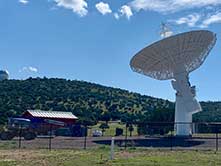MGO: For Science and Society
The data and products from MGO will be used to support a range of scientific and societal applications in areas such as Earth science; positioning, navigation, and timing; radio science information systems, education, and public outreach.
MGO Instrumentation
The scope of MGO – its instrumentation, measurement precision, and scientific analysis framework – is driven by the need to precisely monitor global and regional sea-level change and related areas.
Current Research Projects at MGO
Several research projects utilize and strengthen MGO. Ground-breaking research to improve its equipment and techniques help improve the accuracy of the mm-level metrology. Similarly, significant research is being undertaken to better understand the changes to the gravity load that may affect the MGO’s instrumentation.
UT and NASA: A Unique Relationship Built on a Half-Century Legacy
MGO is the most recent incarnation of a storied scientific career dating back to 1969. The astronauts of Apollo XI – the first mission to successfully land humans on the Moon – left behind a retroreflector in the Moon’s Sea of Tranquility region. The McDonald Observatory’s 2.7-meter Lunar Laser Ranging (LLR) system was among five globally to report successful high-precision lunar laser range measurements continued doing so after the 1980’s. LLR continued at the Observatory using the Mobile Laser Ranging System (pictured) until April 2015.




